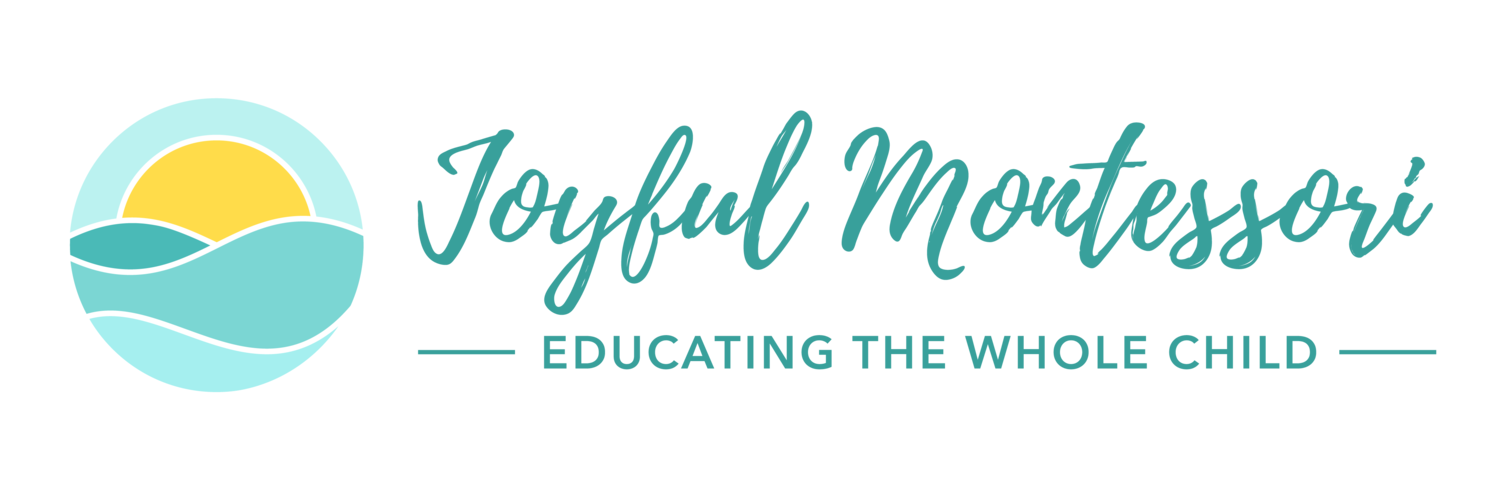Joyful Montessori Philosophy
Montessori Education is distinguished by developing a nurturing environment, independence, confidence, and development of freedom and discipline.
Our program is designed using the Montessori Philosophy and methods of Dr. Maria Montessori which emanates out of respect for that child. We offer each child a “ prepared environment” , which will allow him/her to develop individually at their own pace, according to his/her potential in a non-competitive atmosphere.
As Dr. Montessori observed, the child from birth to six years has an “absorbent mind”, is interested in facts, and has a need for “self-construction”. Children internalize concepts through movement and repetition, the use of their sense, and the manipulation of concrete objects.
Primary Program | Ages 2.5-6 Years Old.
This program develops and adds opportunities for further expansion and refinement in the following skills:
Daily Living Skills
Refining the Senses
Preparation for Writing and Reading
Preparation for Mathematical Concepts
Refinement of Gross and Fine Motor Skills
On a daily basis, the child works individually, in small groups and in large groups. By mixing the ages 2.5-6 during our morning session, the child has the opportunity to experience a real community so that education becomes an “aid to life”.
For the five year old child, we offer the Extended Day Session from 12:30-2:45pm. This season allows opportunity for academic extensions which will prepare the child for the elementary level. Younger children nap during these hours
PRACTICAL LIFE
Practical life consists of activities or works that pertain to practical daily living. This is comprised into six categories: daily living, caring of self, caring for environment, grace & courtesy, gardening and gymnastic exercise/rhythmic activities. Materials used in practical life are real objects, not fake. Children use real materials/food in these works because they are in a real environment and their work has a real purpose. These works provide and assist the child in developing themselves through what Montessori calls “synthetic movement”- movements that have order that are directed by the mind for an intelligent purpose (Standing, 1957). Through Practical life, children are able to gain: order, coordination & control of movement, concentration and independence, which are essential to all learning.
-Standing, E.M. Maria Montessori Her Life and Work. New York: Penguin Group, n.d.SENSORIAL
Education through the child’s senses. Sensory materials help the child to develop clear concepts, focusing on one sense. These materials consist of objects categorized by physical quality such as dimension, color, form, texture, weight, temperature, or sound. These groups all represent a common quality in incremental gradations, making it easy to recognize specific contrast and self-correction. Sensorial Materials also help prepare the child for math. Designed in a series of ten they are internalizing a base of ten, the sequence, pattern of numbers and the precision gradations and differences in sizes as the number increases. Through the use of sensory materials children are able to make connections and gain a deeper knowledge of their environment. Montessori calls this “keys to the universe”.
Language
Writing
Writing comes before reading, because in childhood, muscular sense is the most highly developed part of childhood. Writing is an act of psychomotor mechanisms, compared to reading which is all intellectual work (Montessori, The Discovery of the Child). Writing however is one of the helping developing stages for assisting a child to read. In learning to write they are simultaneously learning phonemic awareness and through that the alphabetic principle, in these preparatory works. In the Montessori classroom, there are many indirect ways we are preparing the child for writing, such as the many practical life and sensorial activities that help the child to build the necessary muscles in their fingers that will be used for writing as well as control and coordination in hands and fingers
Reading
In order to read, the child must first understand the sound of each letter -phonemic awareness. For this reason it is not necessary to teach the name of the letters (abstract). Learning the sound of each letter (concrete) first allows for the child to make the connection between the concrete and abstract of sound and the names of the letters thus giving meaning to the letters. The child understands and makes the connection that each letter has sound or that the sound belongs to a letter. This is crucial to the child’s development and sets up a foundation for reading. Another foundation is the alphabetic principle. This is that letters represents sounds and that printed letters become part of speech. This is achieved by first mastering the latter sound correspondences.With the child completing phonemic awareness and the alphabetic principle, the child can now begin to decode words and begin reading
Mathematical Mind
Math for the child in the Montessori classroom does not begin on their first day of school as with Practical Life, Sensorial Development, and Language, but not until the child is almost four or already four. This is because, in order to handle the math materials, the child must have developed a strong level of coordination and exactitude, which is gained from the Practical life and Sensorial Development. Math requires a great deal of order, coordination & control of movement, concentration.
Rather than memorization of equations and facts, the Montessori math materials provide the child to experience mathematical truths with concrete objects. In math quantity (concrete) is first taught, then only after the child has a strong understanding of the number quantities the name of the numbers (abstract) is taught, followed by the association of quantity with the symbol. With math lessons, using the three-period lesson, the teacher gradually adds new items to a familiar exercise, so the child can build their confidence and not feel overwhelmed, but left curious and with a desire to learn and conquer more.





